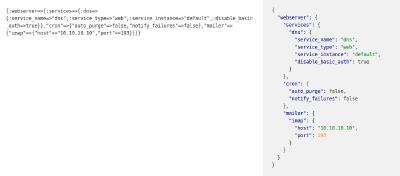Rails virtual attributes use cases
You want to keep some data but do not want to create the new column in the database? Your data should be stored in a form different from the one the user got to deal with?
The virtual attributes could help you! Let’s look at the main cases that come to our aid.

What is ‘Virtual Attribute’? #
The Virtual Attribute is a class attribute, which has no representation in the database. It becomes available after object initialization and remains alive while the object itself is available (like the instance methods). We defined some cases, where virtual attributes are useful and make the code and development more understandable.
Let’s check out how we use them in code samples below.
Simple feature flag #
For example, after submitting the form, the attribute has a value (a checkbox was marked). Depending on it, the specific scenario should be chosen. In other words, the virtual attribute could be used for running a hook.
class Post < ActiveRecord::Base
attr_accessor :simple_feature_flag
before_validation if: :simple_feature_flag do
self.archived = true
end
end
This case has a feature — the virtual attribute can take any type of value.
Supporting the multiple types for the same variable could lead to a code smell. In Rails 5, ActiveRecord has an attribute class method. This method makes virtual attribute look like persistent model attribute, defines the type and allows being under dirty tracking .
class Post < ActiveRecord::Base
* *attribute :virtual_attribute_with_type_cast, :boolean
end
# Tests
class VirtualAttributesUseCase < Minitest::Test
def test_attribute_api
post = Post.new virtual_attribute_with_type_cast: '1'
assert_equal(
true,
post.virtual_attribute_with_type_cast,
'type casting works'
)
assert(
post.virtual_attribute_with_type_cast_changed?,
'dirty module has been enabled'
)
end
end
Decorator for storing the composite values #
One of the most common usages of virtual attributes is decorating several model attributes in one parameter and splitting it back as it was originally used in the database. For example, the virtual attribute we use in the code sample below — author_full_name is stored as 2 separate columns in the DB table — author_first_name and author_last_name, but here and now — we use these 2 columns together in author_full_name.
class Post < ActiveRecord::Base
def author_full_name
[author_first_name, author_last_name].join(' ')
end
def author_full_name=(name)
split = name.split(' ', 2)
self.author_first_name = split.first
self.author_last_name = split.last
end
end
# Test
class VirtualAttributesUseCase < Minitest::Test
def test_virtual_attribute_with_custom_processing
post = Post.create! author_full_name: 'John Doe'
assert_equal 'John', post.author_first_name
assert_equal 'Doe', post.author_last_name
post = Post.create!(
author_first_name: 'John',
author_last_name: 'Doe'
)
assert_equal 'John Doe', post.author_full_name
end
end
The transition from one data type to another, and vice versa #
Let’s reproduce the situation when both user and a database are dealing with one format (e.g JSON) and business logic is dealing with another one (e.g. Hash).

Ideally, we need to register a new data type and add a virtual attribute of this type. In this way, it will take over all the work on the data: validation, transformation, and saving.
In our case let’s try to avoid the creation of new data type.
class Post < ActiveRecord::Base
# input data should come in JSON format
attribute :metadata_raw_json
# transform to Hash format
serialize :metadata, Hash
...
Let’s take a look at the conversion between data, which user sent from the form, and data, which could be stored in the database.
...
def metadata_raw_json=(value)
# define instance variable to validate new data
@metadata_raw_json = value
self.metadata = build_metadata_from(@metadata_raw_json)
end
private
# returns parsed data or nil
def build_metadata_from(json)
try_parse_metadata!(json)
rescue JSON :: ParserError
nil
end
# raise JSON::ParserError
def try_parse_metadata!(value)
ActiveSupport::JSON.decode(value)
end
...
When the user entered an invalid parameter, the application should not save an object. The user should get back the error with the invalid parameter to be fixed. Important: the validation errors should be associated with attribute the user deals with ( e.g. metadata_raw_json we used here).
*...
*validate: metadata_raw_json_valid_format, if: -> {
@metadata_raw_json.present?
}
private
def metadata_raw_json_valid_format
errors.add(:metadata_raw_json, 'invalid JSON') unless
json(@metadata_raw_json)
end
def json(raw_json)
try_parse_metadata!(raw_json)
rescue JSON::ParserError
false
end
*...*
Let’s play the scenario when data is rendered for a user. There are two options:
data which is taken from the user (for example invalid data)
data which is taken from the database (e.g. the first form rendering)
...
# returns new data or data which stores in DB
def metadata_raw_json
@metadata_raw_json || metadata.to_json
end
...
Conclusion #
The virtual attribute is a good helper when you need a quick and easy solution creating the form fields which are not related to the database. They allow having more flexibility in user interface customizations. The great thing is that the developer is not limited to attributes backed by a database, but he can use virtual attributes as well.
Sergey Sviridov is a Software Engineer at JetThoughts . Follow him on LinkedIn or GitHub .
Roman Tershak is a Software Engineer at JetThoughts . Follow him on LinkedIn or GitHub .
If you enjoyed this story, we recommend reading our latest tech stories and trending tech stories .